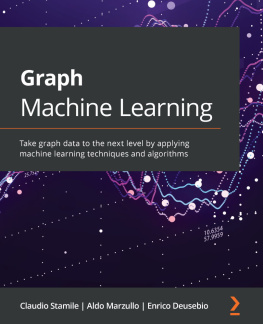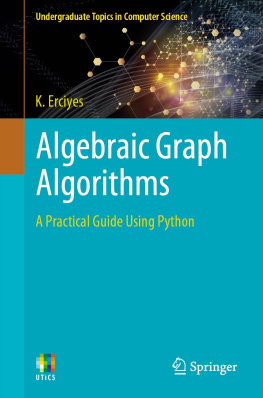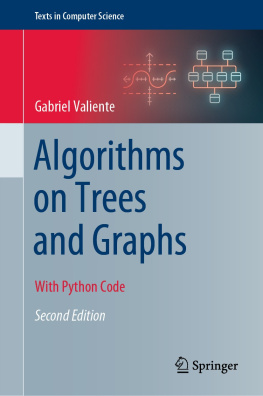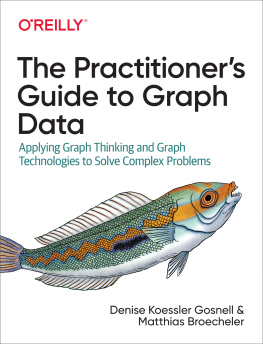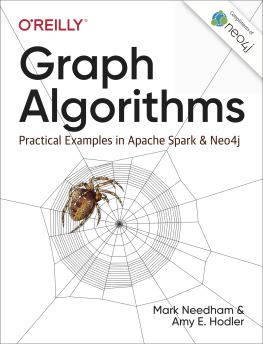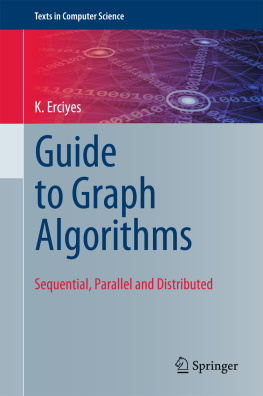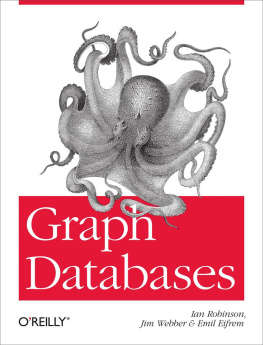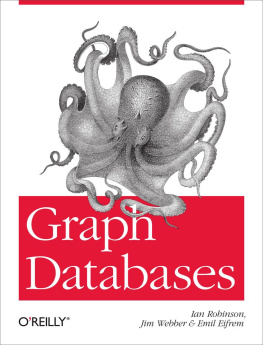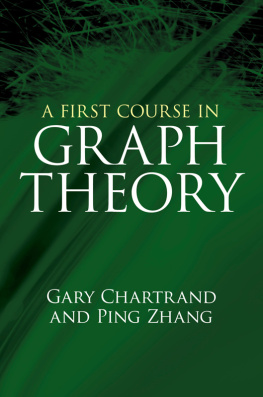The C++ In-Depth Series
Bjarne Stroustrup, Editor
I have made this letter longer than usual, because I lack the time to make it short.
BLAISE PASCAL
The advent of the ISO/ANSI C++ standard marked the beginning of a new era for C++ programmers. The standard offers many new facilities and opportunities, but how can a real-world programmer find the time to discover the key nuggets of wisdom within this mass of information? The C++ In-Depth Series minimizes learning time and confusion by giving programmers concise, focused guides to specific topics.
Each book in this series presents a single topic, at a technical level appropriate to that topic. The Series practical approach is designed to lift professionals to their next level of programming skills. Written by experts in the field, these short, in-depth monographs can be read and referenced without the distraction of unrelated material. The books are cross-referenced within the Series, and also reference The C++ Programming Language by Bjarne Stroustrup.
As you develop your skills in C++, it becomes increasingly important to separate essential information from hype and glitz, and to find the in-depth content you need in order to grow. The C++ In-Depth Series provides the tools, concepts, techniques, and new approaches to C++ that will give you a critical edge.
Titles in the Series
Accelerated C++: Practical Programming by Example, Andrew Koenig and Barbara E. Moo
Applied C++: Practical Techniques for Building Better Software, Philip Romanik and Amy Muntz
The Boost Graph Library: User Guide and Reference Manual, Jeremy G. Siek, Lie-Quan Lee, and Andrew Lumsdaine
C++ Coding Standards: 101 Rules, Guidelines, and Best Practices, Herb Sutter and Andrei Alexandrescu
C++ In-Depth Box Set, Bjarne Stroustrup, Andrei Alexandrescu, Andrew Koenig, Barbara E. Moo, Stanley B. Lippman, and Herb Sutter
C++ Network Programming, Volume 1: Mastering Complexity with ACE and Patterns, Douglas C. Schmidt and Stephen D. Huston
C++ Network Programming, Volume 2: Systematic Reuse with ACE and Frameworks, Douglas C. Schmidt and Stephen D. Huston
C++ Template Metaprogramming: Concepts, Tools, and Techniques from Boost and Beyond, David Abrahams and Aleksey Gurtovoy
Essential C++, Stanley B. Lippman
Exceptional C++: 47 Engineering Puzzles, Programming Problems, and Solutions, Herb Sutter
Exceptional C++ Style: 40 New Engineering Puzzles, Programming Problems, and Solutions, Herb Sutter
Modern C++ Design: Generic Programming and Design Patterns Applied, Andrei Alexandrescu
More Exceptional C++: 40 New Engineering Puzzles, Programming Problems, and Solutions, Herb Sutter
For more information, check out the series web site at www.awprofessional.com/series/indepth/
The Boost Graph Library
User Guide and Reference Manual
Jeremy Siek
Lie-Quan Lee
Andrew Lumsdaine

Boston San Francisco New York Toronto
Montreal London Munich Paris Madrid Capetown
Sydney Tokyo Singapore Mexico City
Many of the designations used by manufacturers and sellers to distinguish their products are claimed as trademarks. Where those designations appear in this book, and Addison-Wesley was aware of a trademark claim, the designations have been printed with initial capital letters or in all capitals.
The authors and publisher have taken care in the preparation of this book, but make no expressed or implied warranty of any kind and assume no responsibil- ity for errors or omissions. No liability is assumed for incidental or consequen- tial damages in connection with or arising out of the use of the information or programs contained herein.
The publisher offers discounts on this book when ordered in quantity for special sales. For more information, please contact:
Pearson Education Corporate Sales Division
One Lake Street
Upper Saddle River, NJ 07458
(800) 382-3419
Visit AW on the Web: www.aw.com/cseng/
Library of Congress Cataloging-in-Publication Data
Siek, Jeremy G.
The Boost graph library : user guide and reference manual/Jeremy G. Siek,
Lie-Quan Lee, Andrew Lumsdaine
p. cm.
Includes bibliographical references and index.
ISBN 0-201-72914-8 (alk. paper)
1. C++ (Computer language). 2. Graph theory. I. Lee, Lie-Quan.
II. Lumsdaine, Andrew. III. Title.
006.6dc21 2001053553
Copyright 2002 Pearson Education, Inc.
All rights reserved. No part of this publication may be reproduced, stored in a retrieval system, or transmitted, in any form, or by any means, electronic, mechanical, photocopying, recording, or otherwise, without the prior consent of the publisher. Printed in the United States of America. Published simultaneously in Canada.
ISBN 0-201-72914-8
Text printed on recycled paper
1 2 3 4 5 6 7 8 9 10MA0504030201
First printing, December 2001
Dedication
To Richard and Elisabeth.
J.G.S.
To Yun.
L-Q.L.
To Wendy, Ben, Emily, and Bethany.
A.L.
Foreword
When I first looked at this book, I felt envious. After all, what led me to the discovery of generic programming was the desire to build a library like the Boost Graph Library (BGL). In 1984 I joined the faculty of Polytechnic University in Brooklyn with some vague ideas about building libraries of software components. Well, to tell you the truth that was my secondary interestmy real interest at that time was to construct formal underpinnings of natural language, something like Aristotles Organon, but more complete and formal. I was probably the only assistant professor in any Electrical Engineering or Computer Science department who meant to obtain tenure through careful study of Aristotles Categories. Interestingly enough, the design of the Standard Template Library (STL)in particular the underlying ontology of objectsis based on my realization that the whole-part relation is a fundamental relation that describes the real world and that it is not at all similar to the element-set relation familiar to us from set theory. Real objects do not share parts: my leg is nobody elses leg. STL containers are like that: two containers do not share parts. There are operations like std::list::splice that move parts from one container to another; they are similar to organ transplant: my kidney is mine until it is spliced into somebody else.
In any case, I was firmly convinced that software components should be functional in nature and based on John Backuss FP system. The only novel intuition was that functions should be associated with some axioms: for example, the Russian peasant algorithm that allows one to compute the nth power in O(log n) steps is defined for any object that has an associative binary operation defined on it. In other words, I believed that algorithms should be associated with what we now call concepts (see of this book), but what I called structure types and what type-theorists call multi-sorted algebras.
It was my great luck that Polytechnic had a remarkable person on its faculty, Aaron Kershenbaum, who combined deep knowledge of graph algorithms with an unusual desire to implement them. Aaron saw potential in my attempts to decompose programs into simple primitives, and spent a lot of time teaching me graph algorithms and working with me on implementing them. He also showed me that there were some fundamental things that cannot be done functionally without prohibitive change in the complexity. Although it was often possible for me to implement linear time algorithms functionally without changing the asymptotic complexity, it was impossible in practice to implement logarithmic time algorithms without making them linear. In particular, Aaron explained to me why priority queues were so important ] attributes the discovery of how to apply binary heaps to Prims and Dijkstras algorithms to Aaron).


